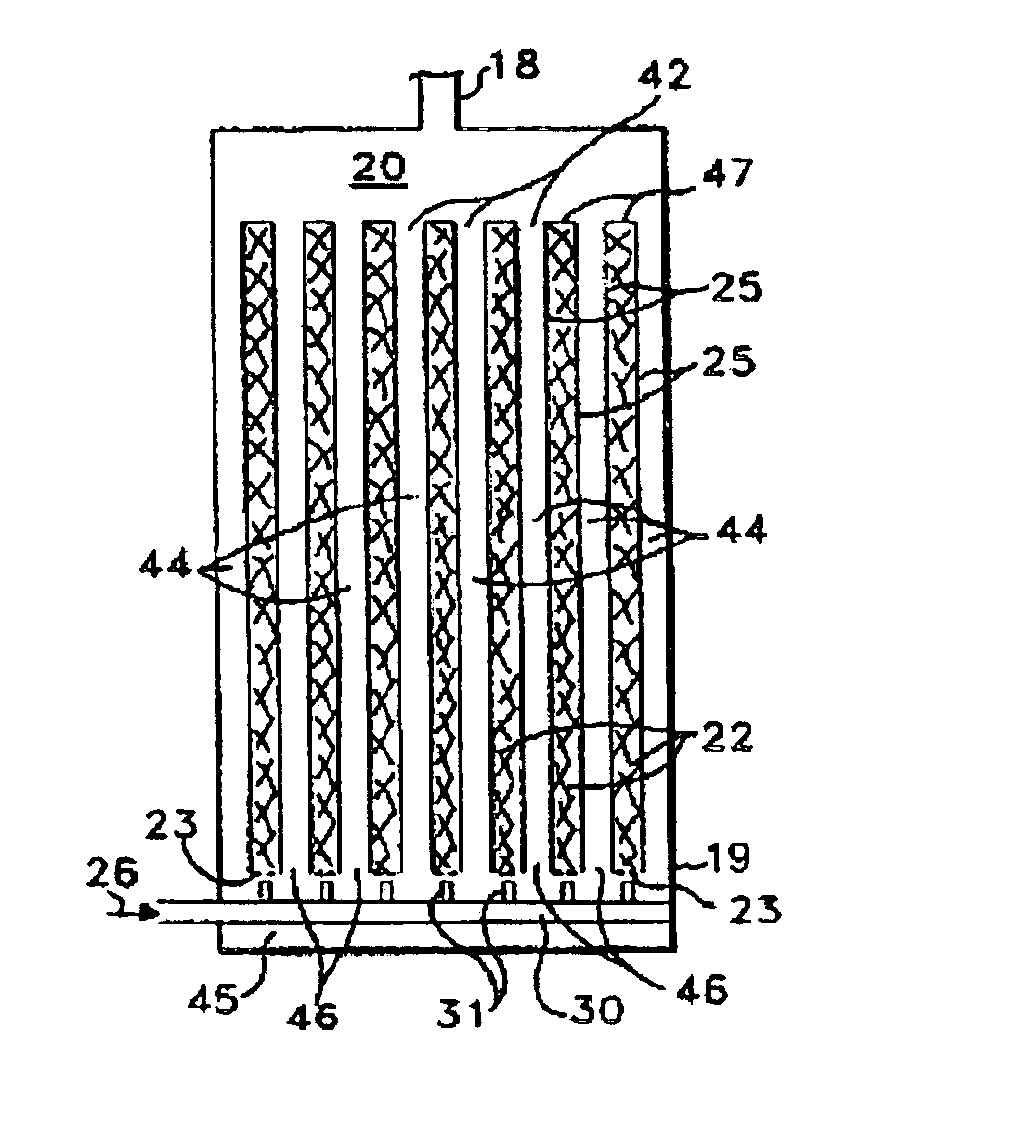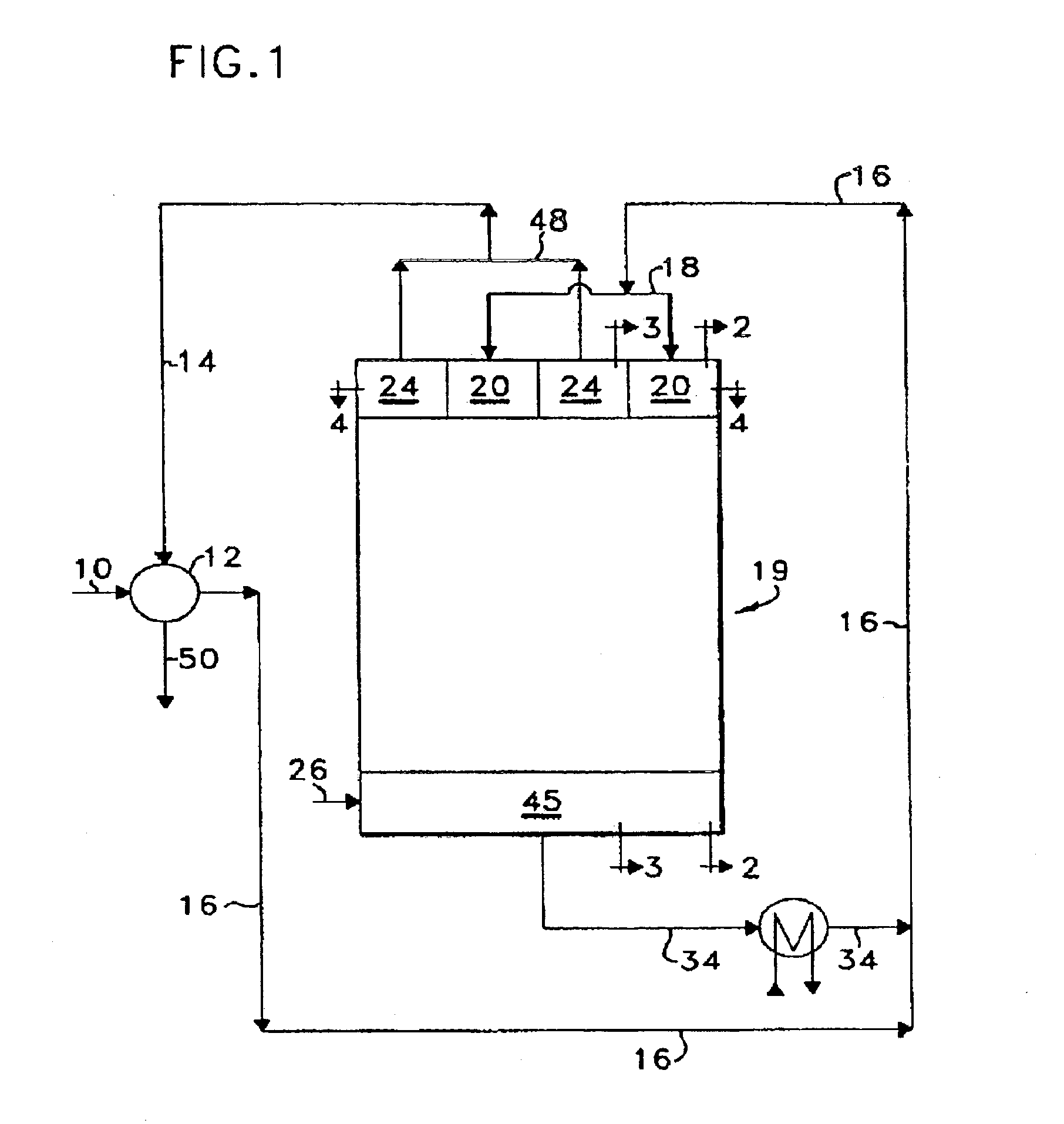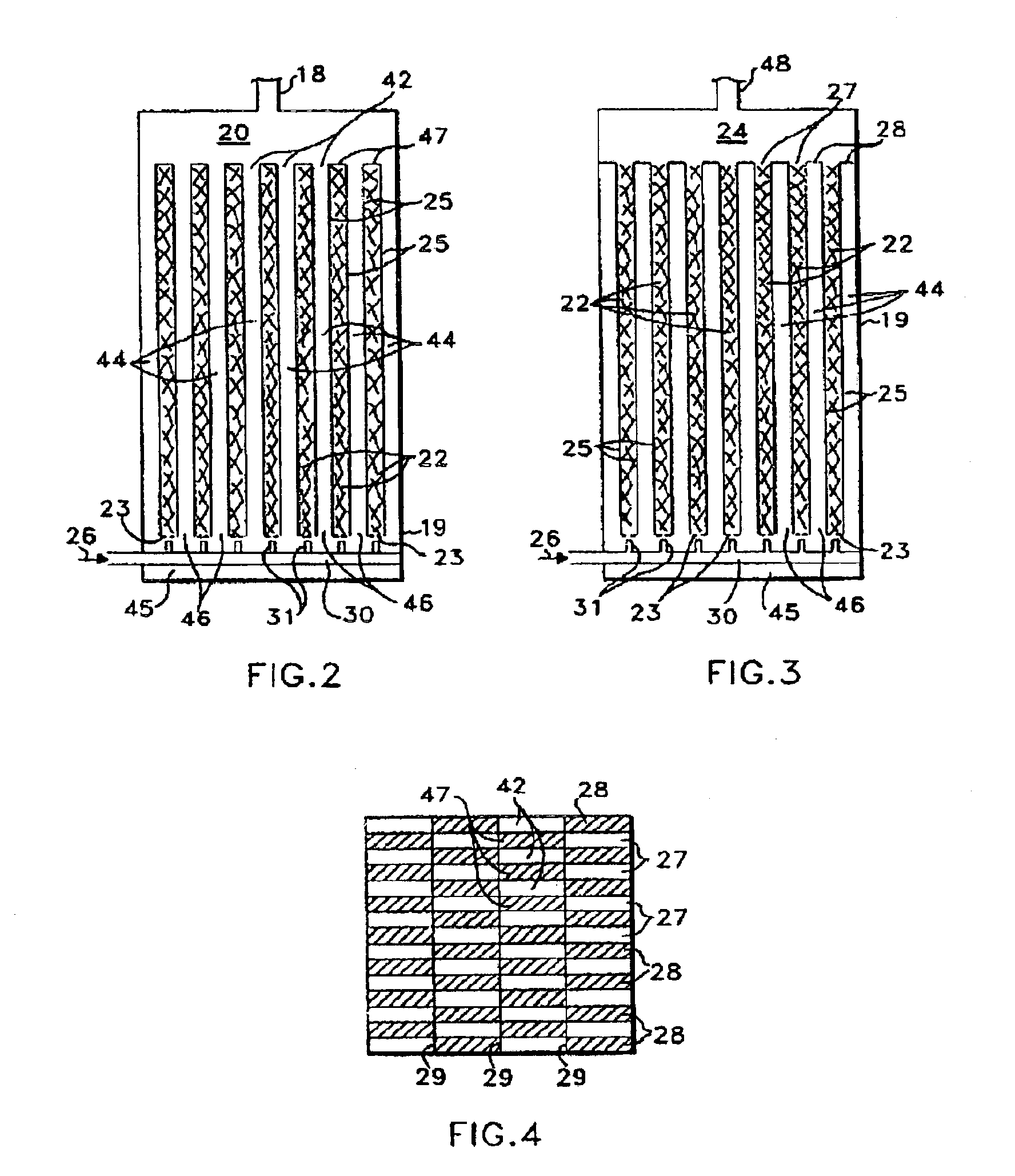Apparatus using plate arrangement for exothermic reactions
a technology of exothermic reactions and apparatus, which is applied in the direction of lighting and heating apparatus, physical/chemical process catalysts, bulk chemical production, etc., can solve the problems of deactivation of catalysts, poor product production, and negative or positive effects on the operation of reaction zones
- Summary
- Abstract
- Description
- Claims
- Application Information
AI Technical Summary
Benefits of technology
Problems solved by technology
Method used
Image
Examples
example
To more fully illustrate the process and apparatus of this invention, the following example shows the calculated operation of a process steam reforming of methane to produce methanol in a plate channel reactor arrangement of the type depicted by FIGS. 7 and 8. A methane-steam reforming process provides a mix of exothermic and endothermic reactions suitable for use in the arrangement as shown. Looking then at FIGS. 7 and 8 in the a context of the steam reforming process, flow through the channels for the exothermic and endothermic process steps requires two different collection and distribution space arrangements. Fluid flow through the distribution / collection spaces can be controlled in a manner analogous to that described and depicted in FIGS. 1-4. In this example, 100 g moles of a methane feed and 250 g of steam enter the process. 60 g moles of the methane representing all of the methane feed for the endothermic reaction zone enters the plate reactor arrangement 69 through a nozzl...
PUM
| Property | Measurement | Unit |
|---|---|---|
| width | aaaaa | aaaaa |
| differential pressure | aaaaa | aaaaa |
| width | aaaaa | aaaaa |
Abstract
Description
Claims
Application Information
 Login to View More
Login to View More - R&D
- Intellectual Property
- Life Sciences
- Materials
- Tech Scout
- Unparalleled Data Quality
- Higher Quality Content
- 60% Fewer Hallucinations
Browse by: Latest US Patents, China's latest patents, Technical Efficacy Thesaurus, Application Domain, Technology Topic, Popular Technical Reports.
© 2025 PatSnap. All rights reserved.Legal|Privacy policy|Modern Slavery Act Transparency Statement|Sitemap|About US| Contact US: help@patsnap.com



